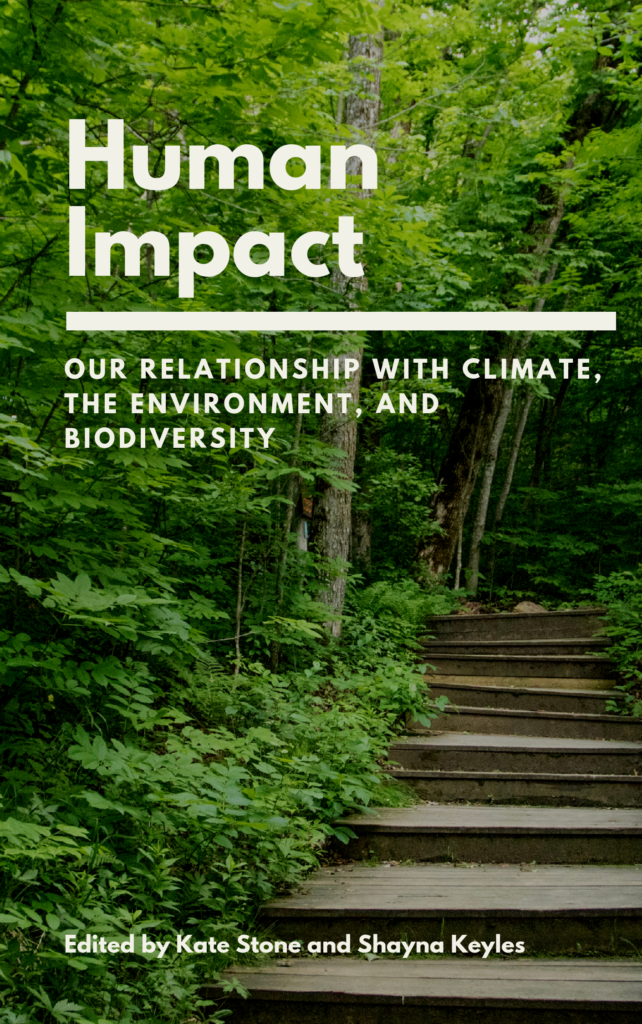
Human Impact compiles insights from more than a dozen scientists and science communicators from around the world, with expertise ranging from biology and plants to astronomy, water resources, and technology.
Climate change is real, and humans are the only species capable of reversing, or at least slowing, the effects of climate change and other ecosystem woes.
Human Impact is a perfect resource for teachers, parents, and discussion groups who are seeking a thoughtful guide to understanding current impacts and shaping the future.
For example, in the chapter “Microbes Help Plants Reduce Heavy Metal Stress,” author Radhika Desikan points out that “using heavy metals in our everyday life is unavoidable. Without them, we would not have mobile phones, pipes, railroads and bridges, automobiles, and even certain medicines.” However, “deposition of excess heavy metals in the soil impairs its quality, which results in poor plant growth and takes its toll on agricultural land. Because heavy metals persist in the soil for a long time and cleaning contaminated soil with industrial methods is expensive, there is a need for other options.” Desikan helps readers understand how plants can clean up contaminated soil through “phytoremediation, a process involving the use of plants and their associated microbes to reduce concentrations of contaminants, rendering the soil less toxic and more arable.”
The book includes relevant discussion questions for several topics, such as:
· Are biofuels the most effective method for reducing travel emissions and traveling sustainably? Why or why not?
· What are microplastics, and why are they a global problem?
· Do you think it’s dangerous to genetically modify a plant to increase its resilience to pests?
· Why have wildfires in the Sierra become more destructive to humans in recent years?
Human Impact describes several current “citizen science” efforts which give every person the opportunity to make a valued contribution to addressing environmental issues. Examples include:
· Documenting poor air quality to push for changes to improve public health
· Logging information on the climate and unusual weather events to study climate change
· Studying several different species of birds and animals to understand ecological changes
The stories in this collection are all factually accurate and readily understood. The articles will help readers understand how humans have affected their environment, examine actions, and repair some of the damage that’s been done.
Educators: this book is aligned with the Next Generation Science Standards (NGSS) HS-LS4-2 Biological Evolution: Unity and Diversity and HS-LS2-7 Ecosystems: Interactions, Energy, and Dynamics.
